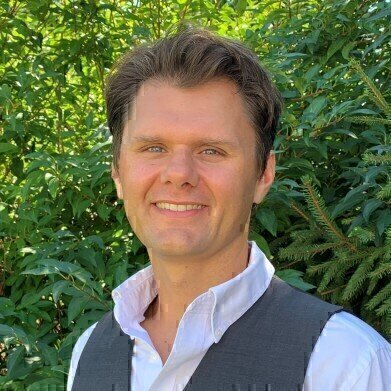-
 Professor Steven Malin, Rutgers University
Professor Steven Malin, Rutgers University
News & Views
Are ‘Night Owls’ at greater risk of Type 2 diabetes and heart disease than ‘Early Birds’?
Sep 26 2022
Researchers from Rutgers University, New Jersey (USA), investigating activity and sleep patterns between ‘early birds’ and ‘night owls’ for influences that could affect our risk of diseases, such as type 2 diabetes and heart disease, have found that wake/sleep cycles can cause metabolic differences which might alter our body’s preference for energy sources.
The metabolic differences related to how well each group participating in the study could use insulin to promote glucose uptake by the cells for storage and energy use; those who stayed up later had a reduced ability to use fat for energy, meaning fats may build-up in the body and increase risk for type 2 diabetes and cardiovascular disease.
Assessing body mass and composition
Participants (n=51) were classified into two groups (early and late) based on their ‘chronotype’ – our natural propensity to seek activity and sleep at different times. They used advanced imaging to assess body mass and body composition, as well as insulin sensitivity and breath samples to measure fat and carbohydrate metabolism.
Senior author Professor Steven Malin, Institute of Translational Medicine and Science, Rutgers University, explained more to International Labmate about the imaging aspects of the study: “Regarding the technique, we used dual-energy x-ray absorptiometry (DXA) to assess body composition. In short, the DXA method is a non-invasive scan that can tell you both body weight, but also the composition of that weight. Specifically, it provides an in-depth analysis of fat tissue, lean mass and bone density.
“This is clinically relevant because a person could be considered to have a healthy body weight based on height/weight charts, yet have a lot of body fat with less muscle mass. Alternatively, some might be considered overweight, but have considerable muscle mass with low amounts of body fat.
“The technique generally works by passing a low-radiation x-ray bean through tissues. The varying absorption allows specialists/researchers to determine then type of tissue and quantity. The technique is fairly straightforward in which a person lays down on a padded table. An imaging device, or arm, is positioned above the person and slowly passes over the body, thereby generating images on a computer monitor. This approach takes about 10 minutes or less.”
DXA was used as some evidence indicates that people who consider themselves of late chronotype have higher body weights or risk of obesity than early chronotype counterparts, said Professor Malin. It also provided the opportunity for the researchers to identify what body composition people of early or late chronotype had, which in turn could lead to a better understanding of how body fat and lean tissues relate to health. “Our results suggested that the body composition was not necessarily a direct link to health and other factors, such as quality vs quantity, may be more important as it relates to fat metabolism and insulin sensitivity. Further work is needed though to confirm,” he added.
Participants were monitored for a week to assess their activity patterns across the day. They ate a calorie and nutrition-controlled diet and had to fast overnight to minimise dietary impact on the results. To study fuel preference, they were tested while at rest before completing two 15-minute bouts of exercise: one moderate and one high intensity session on a treadmill. Aerobic fitness levels were tested through an incline challenge where the incline was raised 2.5% every two minutes until the participant reached a point of exhaustion.
The researchers found that early birds use more fat for energy at both rest and during exercise than night owls and were also more insulin sensitive. Night owls were discovered to be insulin resistant, meaning their bodies require more insulin to lower blood glucose levels and their bodies favoured carbohydrates as an energy source over fats. This group’s impaired ability to respond to insulin to promote fuel use can be harmful as it indicates a greater risk of type 2 diabetes and/or heart disease. The cause for this shift in metabolic preference between early birds and night owls is yet unknown and needs further investigation.
“The differences in fat metabolism between ‘early birds’ and ‘night owls’ shows that our body’s circadian rhythm (wake/sleep cycle) could affect how our bodies use insulin. A sensitive or impaired ability to respond to the insulin hormone has major implications for our health. This observation advances our understanding of how our body’s circadian rhythms impact our health. Because chronotype appears to impact our metabolism and hormone action, we suggest that chronotype could be used as a factor to predict an individual’s disease risk,” Professor Malin said.
“We also found that early birds are more physically active and have higher fitness levels than night owls who are more sedentary throughout the day. Further research is needed to examine the link between chronotype, exercise and metabolic adaptation to identify whether exercising earlier in the day has greater health benefits.”
The Physiological Society brings together over 3,000 scientists from over 60 countries promoting physiology with the public and parliament alike. It supports physiologists by organising world-class conferences and offering grants for research and also publishes the latest developments in the field.
More information online
Digital Edition
Lab Asia 31.2 April 2024
April 2024
In This Edition Chromatography Articles - Approaches to troubleshooting an SPE method for the analysis of oligonucleotides (pt i) - High-precision liquid flow processes demand full fluidic c...
View all digital editions
Events
Apr 28 2024 Montreal, Quebec, Canada
May 05 2024 Seville, Spain
InformEx Zone at CPhl North America
May 07 2024 Pennsylvania, PA, USA
May 14 2024 Oklahoma City, OK, USA
May 15 2024 Birmingham, UK

















